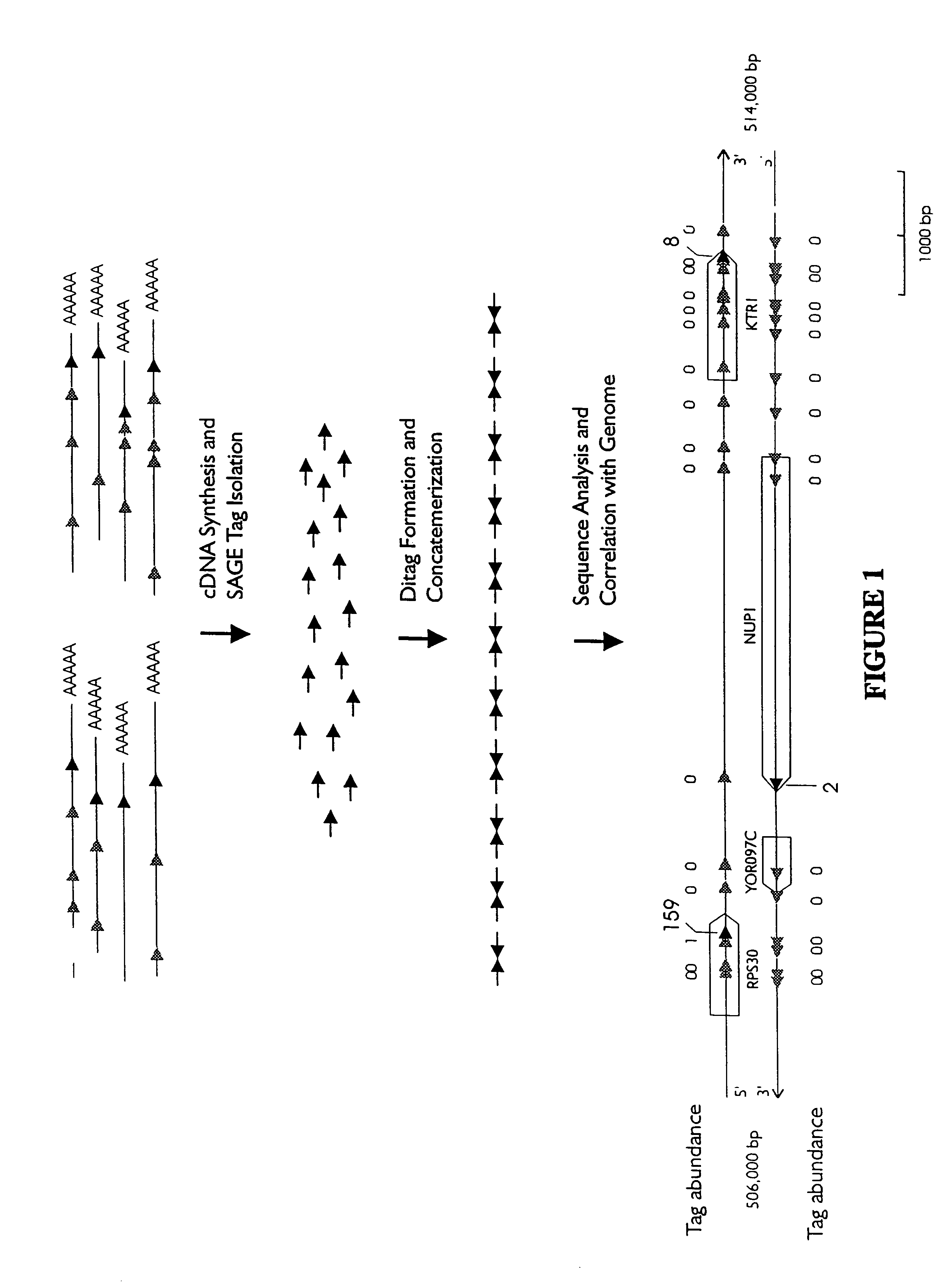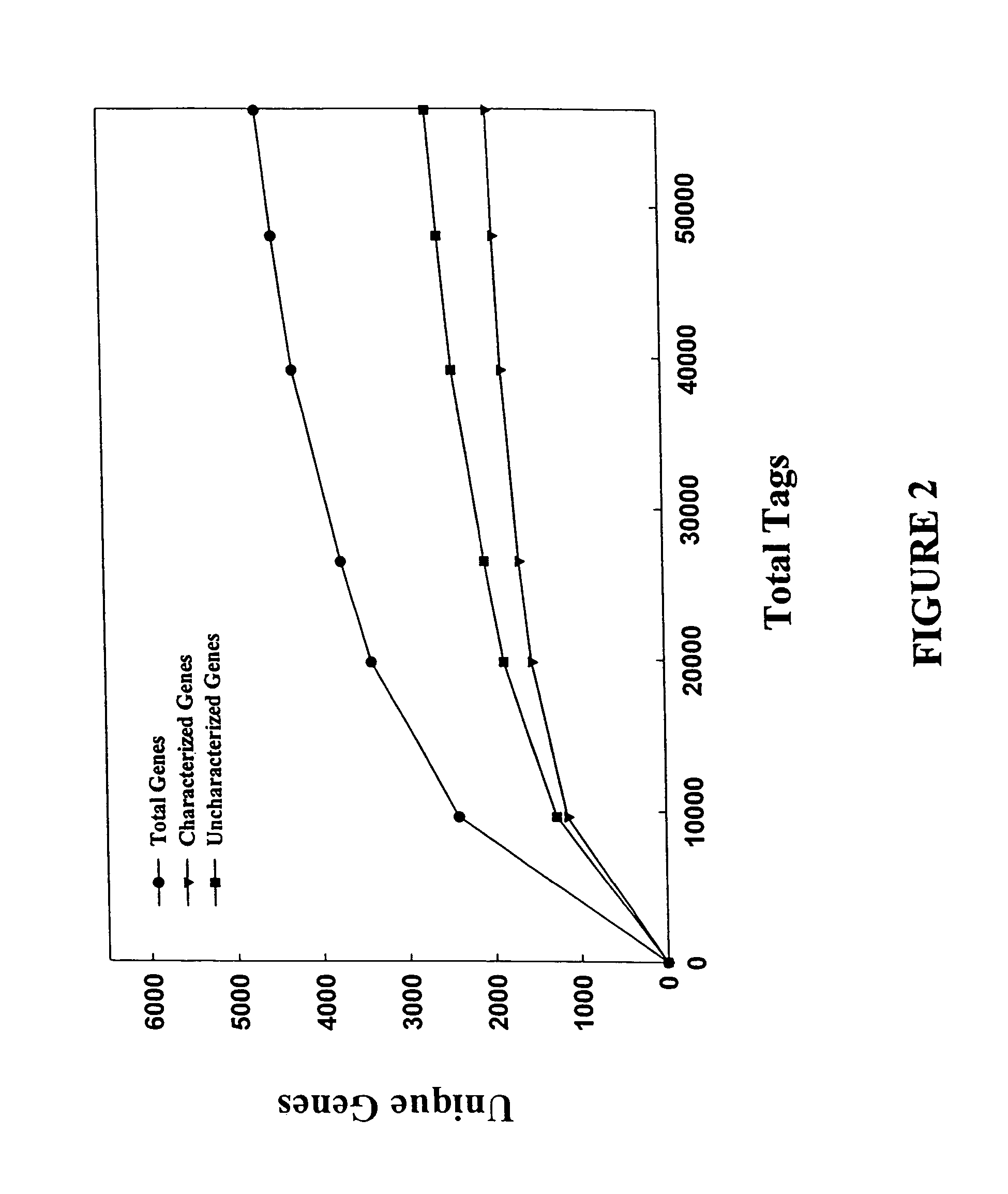Characterization of the yeast transcriptome
a transcriptome and yeast technology, applied in the field of characterization of the expressed genes of the yeast genome, can solve problems such as uncharacterized
- Summary
- Abstract
- Description
- Claims
- Application Information
AI Technical Summary
Benefits of technology
Problems solved by technology
Method used
Image
Examples
example
Summary
[0045]We have analyzed the set of genes expressed from the yeast genome, herein called the transcriptome, using serial analysis of gene expression (SAGE). Analysis of 60,633 transcripts revealed 4,665 genes, with expression levels ranging from 0.3 to over 200 transcripts per cell. Of these genes, 1,981 had known functions, while 2,684 were previously uncharacterized. Integration of positional information with gene expression data allowed the generation of chromosomal expression maps, identifying physical regions of transcriptional activity, and identified genes that had not been predicted by sequence information alone. These studies provide insight into global patterns of gene expression in yeast and demonstrate the feasibility of genome-wide expression studies in eukaryotes.
Results
Characteristics and Rationale of SAGE Approach
[0046]Several methods have recently been described for the high throughput evaluation of gene expression (Nguyen et al., 1995; Schena et al., 1995; Vel...
PUM
| Property | Measurement | Unit |
|---|---|---|
| physical characteristics | aaaaa | aaaaa |
| distance | aaaaa | aaaaa |
| concentration | aaaaa | aaaaa |
Abstract
Description
Claims
Application Information
 Login to View More
Login to View More - R&D
- Intellectual Property
- Life Sciences
- Materials
- Tech Scout
- Unparalleled Data Quality
- Higher Quality Content
- 60% Fewer Hallucinations
Browse by: Latest US Patents, China's latest patents, Technical Efficacy Thesaurus, Application Domain, Technology Topic, Popular Technical Reports.
© 2025 PatSnap. All rights reserved.Legal|Privacy policy|Modern Slavery Act Transparency Statement|Sitemap|About US| Contact US: help@patsnap.com



